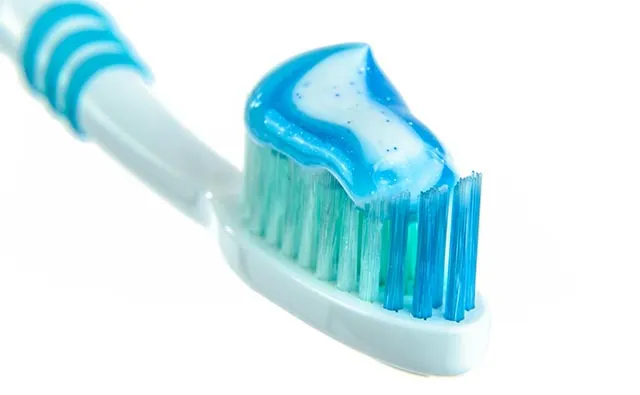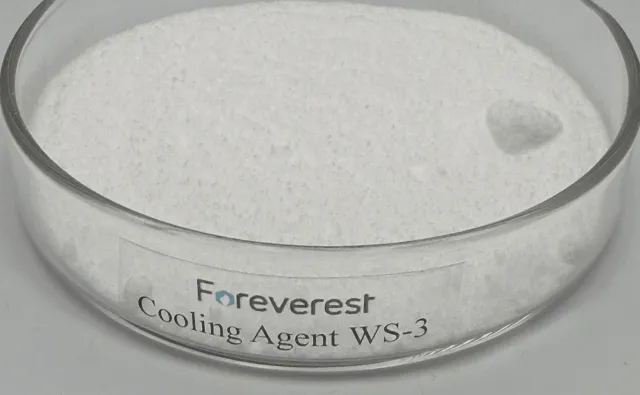Buyer Guide, Feature Article, Company News, PR
Overview of Cooling Agents

Buyer Guide, Feature Article, Company News, PR

The refreshing sensation left in the mouth by toothpaste or chewing gum, and the freezing feeling on the skin from applying body wash, come from a series of chemical substances known as “cooling agents (also called coolant).” These types of personal care products often feature designs with mint leaves, ice cubes, and other elements on their packaging, suggesting to consumers that they can provide a cooling relief in the hot summer. The credit for this cooling sensation goes to the cooling agents.

In nature, pure natural cooling agents include essential oils like eucalyptus oil, camphor oil, and peppermint oil, with peppermint leaves being a prime example. Peppermint has a cooling sensory characteristic because it contains menthol. Menthol selectively stimulates the TRPM8 receptors (CMR1)1 in human skin or mucous membranes. TRPM8 receptors are molecular transducers of cold somatosensation, cold-activated receptors that stimulate the human spinal cord and brain in low-temperature environments, making us feel cold2.
When we suffer minor injuries, such as twisting an ankle during exercise, we often use cold items like ice to relieve pain3. Research and application of TRPM8 have confirmed the analgesic effect of menthol4. Thus, natural menthol is used not only in cooling agents but also in medical applications.
Table 1. Important cooling compounds added to the FEMA GRAS lists (by year) © John Leffingwell, Leffingwell & Associates, and David Rowsell, Chromatography Resources
|
CAS |
WS# |
Flavis# |
FEMA# |
Material |
Year |
|
89-79-2 |
NAa |
02.067 |
2962 |
Coolact P; isopulegol; (-)-isopulegolb |
1965 |
|
39711-79-0 |
WS-3 |
16.013 |
3455 |
N-Ethyl-p-menthane-3-carboxamide |
1975 |
|
59259-38-0 |
NA |
09.551 |
3748 |
Frescolat ML; L-menthyl lactatec |
1985 |
|
87061-04-9 |
NA |
02.224 |
3784 |
Coolact 10; Coolant 10; 3-(L-menthoxy)propane-1,2-diol |
1993 |
|
51115-67-4 |
WS-23 |
16.053 |
3804 |
2-Isopropyl-N,2,3-trimethylbutyramide |
1996 |
|
156324-78-6 |
NA |
09.842 |
3805 |
Frescolat MGC; L-menthol ethylene glycol carbonate |
1996 |
|
30304-82-6 |
NA |
09.843 |
3806 |
Frescolat MPC; L-menthol 1&2-propylene glycol carbonate |
1996 |
|
563187-91-7 |
NA |
06.133 |
3807 |
Frescolat MGA; L-menthone 1,2-glycerol ketal |
1996 |
|
63187-91-7 |
NA |
06.120 |
3806 |
Frescolat MGA (racemic); DL-menthone 1,2-glycerol ketal |
1996 |
|
77341-67-4 |
NA |
09.616 |
3810 |
Monomenthyl succinate |
1996 |
|
195863-84-4 |
NA |
02.254 |
3849 |
3-(L-Menthoxy)-2-methylpropan-1,2-diol |
1998 |
|
156324-82-2 |
NA |
– |
3992 |
Frescolat Type MPC (racemic); DL-menthol propylene glycol carbonate |
2001 |
|
220621-22-7 |
NA |
09.929 |
4006 |
(-)-Menthyl glutarate |
2001 |
|
42822-86-6 |
NA |
02.246 |
4053 |
Coolact 38D; PMD 38; (+)-cis & (-)-trans p-menthane-3,8-diol |
2003 |
|
38618-23-4 |
NA |
02.247 |
4154 |
Coolact 5; 2-(L-menthoxy)ethanol |
2005 |
|
68127-22-0 |
NA |
– |
4155 |
Questice;d (-)-menthyl pyrrolidone carboxylate |
2005 |
|
544714-08-1 |
NA |
16.092 |
4230 |
(±)-N,N-Dimethyl menthyl succinamidee |
2005 |
|
115869-76-6 |
NA |
09.949 |
4308 |
L-Menthyl (S)-3-hydroxybutyratef |
2007 |
|
68489-14-5 |
WS-5 |
16.111 |
4309 |
(1R,2S,5R)-N-((Ethoxycarbonyl)methyl)-p-menthane-3-carboxamide |
2007 |
|
59557-05-0 |
NA |
– |
4327 |
Ultracool 7; (-)-menthyl acetoacetateg |
2007 |
|
852379-28-3 |
NA |
16.117 |
4496 |
G-180; N-(4-cyanomethylphenyl)-p-menthanecarboxamide |
2009 |
|
23445-02-5 |
NA |
– |
4497 |
(-)-Cubebol |
2009 |
|
51115-77-6 |
WS-116 |
– |
4603 |
2,2-Diethyl-N-(2-hydroxy-1,1-dimethylethyl)butanamide |
2009 |
|
406179-71-3 |
NA |
09.935 |
4604 |
Dimenthyl glutarate |
2009 |
|
51115-70-9 |
WS-27 |
– |
4557 |
N-Ethyl-2,2-diisopropylbutanamide |
2009 |
|
883215-02-9 |
NA |
|
4602 |
N-(2-Hydroxyethyl)-2,3-dimethyl-2-isopropylbutanamide |
2009 |
|
847565-09-7 |
NA |
16.118 |
4549 |
G-190; (lR,2S,5R)-N-(2-pyridin-2-ylethyl)menthylcarboxamide |
2009 |
|
1119711-29-3 |
NA |
16.125 |
4684 |
(2S,5R)-N-[4-(2-Amino-2-oxoethyl)phenyl]-p-menthanecarboxamide |
2011 |
|
73435-61-7 |
WS-NA |
16.124 |
4693 |
(1R,2S,5R)-N-Cyclopropyl-p-menthanecarboxamid |
2011 |
|
28804-53-7 |
NA |
– |
4718 |
2-[(2-p-Menthoxy)ethoxy]ethanol |
2011 |
|
68489-09-8 |
WS-12 |
16.123 |
4681 |
(1R,2S,5R)-N-(4-Methoxyphenyl)-p-menthanecarboxamide |
2011 |
The abundance of cooling agent products today originates from the research achievements of Wilkinson Sword Ltd5. in the 1970s. They proposed a low-volatility substance that could replace menthol (with a logP value of 3.0±0.35) while providing the same cooling sensation6. Natural menthol’s drawbacks are its volatility and overly strong cooling strength. Researchers like Hugh R. Watson and David G. Rowsell developed over a thousand synthetic substances, represented by WS-3. These synthetic substances have a cooling sensation and feature electron-donating oxygen atoms that can act as hydrogen bond acceptors. The optimal hydrogen bond groups are hydroxy, N-alkylcarboxamides, sulfoxides, and phosphine oxides. The WS series of cooling agents also overcame the volatility issue of natural menthol. According to the development requirements at that time, the common characteristics of these cooling agents were6: a) hydrogen bond groups; b) compact hydrocarbon skeletons; c) good hydrophilic/hydrophobic balance; d) molecular weight in the range of 150-350.
During the 1970s and 1980s, R.J. Reynolds and Philip Morris studies confirmed that WS-14 (N-tert-butyl-p-menthane-3carboxamide) was the best cooling agent choice for cigarettes. By the 1990s, in addition to WS-3 and WS-23 cooling agents, Haarmann & Reimer’s (now Symrise) introduced Frescolat MGA (menthone glycerin acetal), Frescolat ML (menthyl lactate), and Japan’s Takasago introduced Coolact 10 (menthoxy propanediol) and l-Menthyl Acetate. The market was flourishing at that time.
Entering the 2000s, TRPM8 receptors were confirmed. WS series cooling agents such as WS-5, WS-116, WS-27, WS-NA, and WS-12 entered the market successively.
Table 2 Approximate Relative Cooling Strengths vs Menthol (as 100) © John C. LeffingwellCenters for Disease Control and Prevention, 2014
|
Cooling Agent |
Cooling Strengths |
|
WS-5 |
400 |
|
WS-3 |
150 |
|
WS-12 |
125 |
|
(-)-menthol |
100 |
|
WS-23 |
75 |
|
WS-14 |
75 |
|
N-Cyclopropyl-p-menthane-3-carboxamide |
60 |
|
Menthyl 3-hydroxybutyrate |
45 |
|
Frescolat ML |
43 |
|
Frescolat MGA |
41 |
|
(2S)-3-(I-menthoxy)propane-1,2-diol |
39.5 |
|
(+)-Neomenthol |
32 |
|
(+)-Menthol |
27 |
|
Coolact P (-)-isopulegol |
25 |
|
WS-4 |
23 |
|
WS-30 |
22.5 |
|
TK-10 |
22.5 |
|
WS-27 |
18 |
|
(-)-Neoisomenthol |
13 |
|
(+)-lsomenthol |
11 |
|
PMD 38 |
11 |
|
(-)-lsomenthol |
3 |
|
(-)-NeomenthoL |
3 |
|
(+)-Neoisomenthol |
3 |
According to the financial report of Kunshan Asia Aroma Corp Ltd, the global demand for WS-23 cooling agents in 2019 was approximately 350 tons. The trade volume of menthol in 2022 was $669 million, and the production value is expected to reach $1.2 billion by 2030. Major consumers included Mars Wrigley and Kraft for chewing gum production, and Vaporesso, JUUL, and Puff Bar for e-cigarette production.